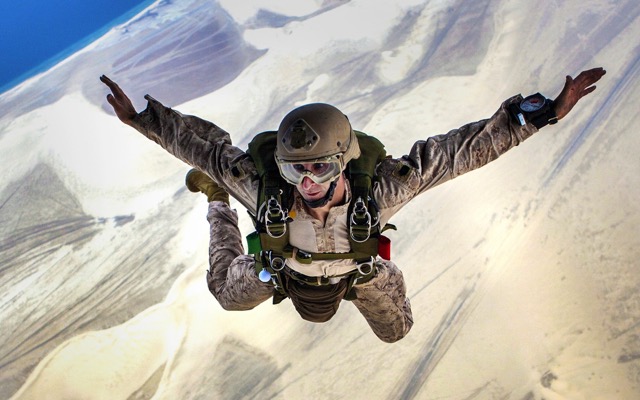If you’ve ever wondered whether you can skydive in the rain, or if the ground being wet affects your skydiving experience, you’re in the right place! We’ll also tackle the question of whether parachutes work in the rain and if it’s possible to skydive through a rain cloud. So, fasten your seatbelts (or should we say, harnesses), because we’re about to dive into the thrilling world of rain-soaked skydiving adventures!
Introduction
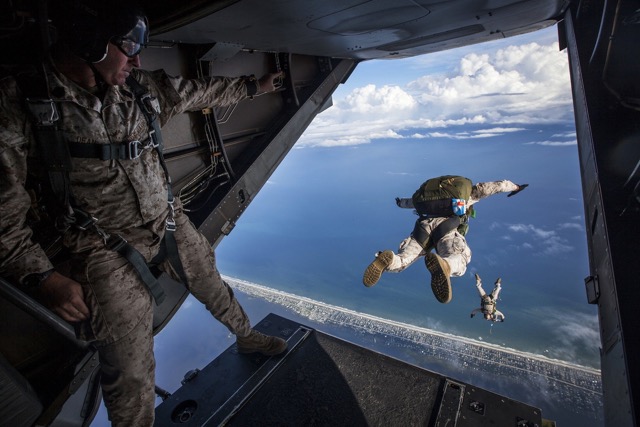
Skydiving is an adventurous sport that offers thrill-seekers an opportunity to defy gravity and experience an adrenaline rush like no other. However, one question that often comes up is, “Can you skydive in the rain?” Many beginners and even some experienced skydivers wonder whether it is safe or even possible to take the leap when the rain is pouring down from the sky.
Rainfall, with its wet and slippery nature, poses several risks and challenges to skydivers. When it comes to safety, the primary concern is the impact rain can have on the parachute system. Water can add a significant amount of weight to the canopy, leading to slower and less controlled descents. It can also interfere with the parachute’s ability to fully open, potentially causing a malfunction.
Another important factor to consider is visibility. Rain reduces visibility and can make it difficult for skydivers to maneuver and navigate accurately. This reduced visibility not only poses risks during the freefall but also during the landing process. The landing zone may not be clearly visible, making it challenging to identify potential obstacles or hazards.
Can You Skydive if the Ground Is Wet?
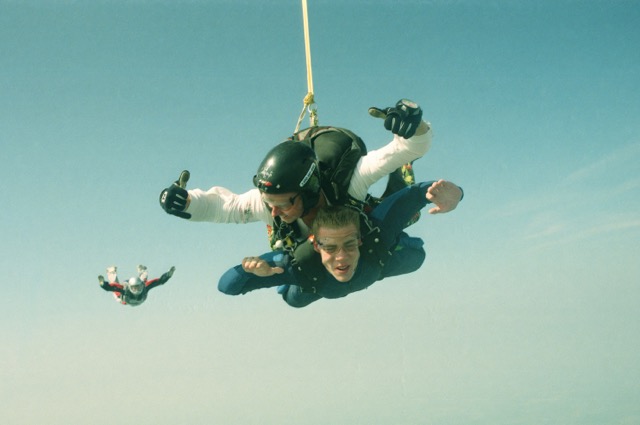
When it comes to skydiving, safety is always a top priority. One question that often arises is whether or not it’s possible to skydive if the ground is wet. While it may seem logical that wet ground could pose a risk, skydiving is generally safe to do even when the ground is wet.
Before we delve into the details, it’s important to understand how a skydiving landing works. When a skydiver jumps out of an aircraft, they deploy a parachute to slow their descent and guide them safely to the ground. A well-functioning parachute should be able to handle various landing conditions, including wet ground.
That being said, there are a few factors to consider when deciding whether or not to skydive if the ground is wet. Firstly, the type of terrain plays a significant role. If the landing area has a lot of loose soil or mud, it could potentially increase the risk of injury upon landing. However, if the landing area is relatively solid, such as grass or gravel, the wet ground should not pose a major problem.
- Proper equipment: Skydiving gear is designed to withstand various weather conditions. Parachutes are specifically designed to work in wet environments, including wet ground. However, it’s essential to ensure that all equipment is in good working condition and properly maintained before every jump.
- Professional guidance: It’s always recommended to skydive under the supervision of experienced professionals. They can assess the weather conditions, including any risks associated with wet ground, and provide guidance on whether or not it’s safe to jump. It’s crucial to follow their instructions and advice at all times.
- Personal judgment: Every skydiver should also exercise personal judgment and make an informed decision based on their skill level and experience. If you are a beginner or feel uncertain about landing on wet ground, it’s best to consult with professionals or postpone your jump until the ground dries up.
Will a Parachute Work in the Rain?

A common question that often comes up for thrill-seekers and skydiving enthusiasts is whether or not a parachute will work effectively in the rain. With the weather unpredictable and rain being a common occurrence in many areas, it’s important to understand the impact it may have on skydiving. So, let’s explore the question: Will a parachute work in the rain?
When it comes to rain and parachutes, there are several factors to consider. The first and most crucial factor is the type of parachute being used. Modern parachutes are typically made from a specialized nylon material that is resistant to water. This means that rain by itself will not render the parachute completely useless. However, it’s worth mentioning that the weight and composition of the parachute can impact its performance in wet conditions.
In light rain or drizzle, a parachute will still function relatively well. The nylon fabric used in modern parachutes is designed to shed water, allowing it to maintain its shape and integrity. As a result, the canopy of the parachute remains inflated, providing the necessary air resistance for a safe and controlled descent. However, in heavy rain or a downpour, the parachute may become saturated, which can affect its performance.

- Firstly, a saturated parachute will become heavier due to the added water weight. The increased weight can impact the parachute’s descent rate, potentially causing it to descend faster than anticipated.
- Secondly, a saturated parachute may also experience reduced stability. The additional water can alter the shape and aerodynamics of the canopy, leading to a less reliable and potentially turbulent descent.
- Lastly, visibility can also be a concern during heavy rain. The raindrops can obstruct the skydiver’s vision, making it more challenging to navigate and execute a safe landing.
It’s essential to note that skydiving instructors and professionals prioritize safety above all else. They continuously monitor weather conditions and take necessary precautions to ensure the well-being of skydivers. Depending on the severity of the rain and other weather factors, they may choose to delay or reschedule jumps to avoid any unnecessary risks.
Can You Skydive Through a Rain Cloud?
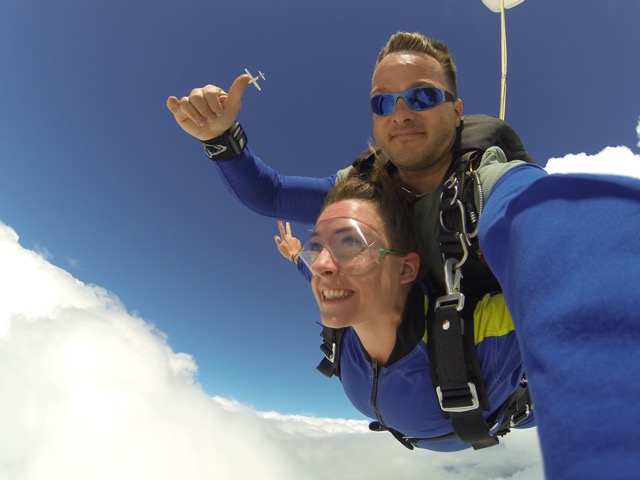
When it comes to skydiving, most people assume that it can only be done on clear, sunny days. However, thrill-seekers often wonder if it is possible to skydive through a rain cloud. This intriguing question raises several concerns and considerations, including safety, equipment, and the overall experience. Let’s delve into the details and explore whether or not skydiving through a rain cloud is a possibility.
First and foremost, safety should always be the top priority when engaging in any extreme sport, including skydiving. Skydiving through a rain cloud can pose significant risks and challenges. Rain clouds are usually accompanied by turbulent winds, low visibility, and heavy precipitation. These factors can greatly affect the stability and control of a parachute, making it difficult to navigate and land safely. Therefore, it is highly discouraged to attempt skydiving through a rain cloud without the proper expertise and training.
Secondly, let’s consider the impact of rain on parachute performance. Parachutes are designed to function optimally in dry conditions. Rainwater can add weight and decrease the efficiency of the canopy, making it harder to control and maneuver. Additionally, the rain can affect the fabric of the parachute, potentially compromising its structural integrity. In extreme cases, a wet parachute may even fail to open properly or fail to slow down the descent adequately, increasing the risk of serious injury.
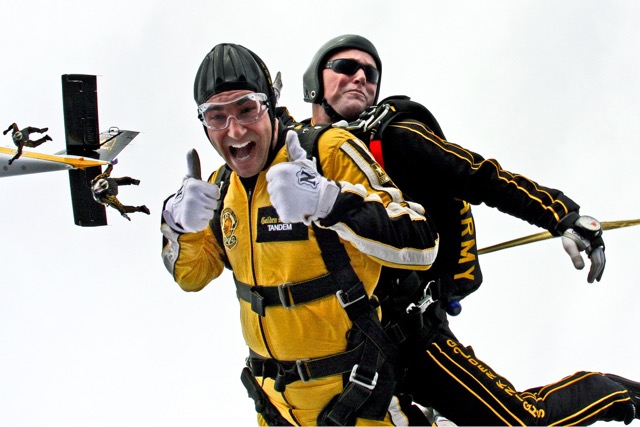
It is important to note that skydiving regulations and guidelines are put in place to ensure the safety of participants. Skydiving operations typically have weather restrictions in place to prevent individuals from jumping in unfavorable conditions, such as rain clouds. Qualified skydiving instructors and operators rely on weather forecasts and assessments to determine whether it is safe to jump on a particular day. They consider factors such as wind speed, cloud cover, and precipitation. So, even if you have the desire to skydive through a rain cloud, it is highly unlikely that you will find an authorized skydiving center that allows such a risky endeavor.
In conclusion, while the idea of skydiving through a rain cloud may sound thrilling and adventurous, it is essential to prioritize safety above all else. Skydiving is an exhilarating sport that should be enjoyed responsibly and within the boundaries set by experts and governing bodies. Attempting to skydive through a rain cloud can lead to dangerous situations and potentially life-threatening consequences. Remember, skydiving is meant to be an unforgettable experience, but always ensure that your safety and the safety of others are never compromised.

